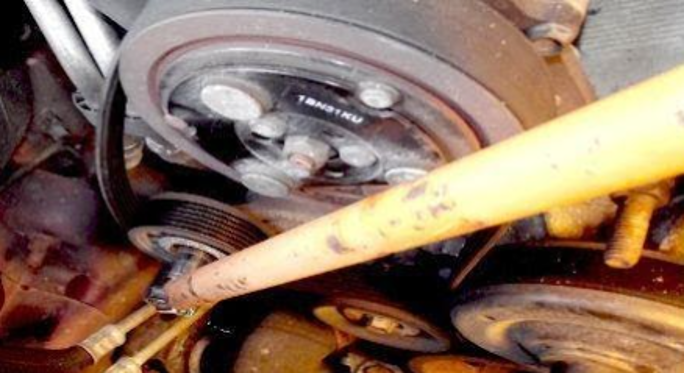Basic Vehicle Repairs – Replacing Drive Belt and Coolant Flush
How to Replace the Serpentine Belt on a 2021 Jeep Liberty V-6 – Every 50,000 Miles
Things You’ll Need: Paper, Pen, Breaker bar, and Socket set
Removal
Open the Liberty’s hood and find the serpentine belt, which routes around the accessory pulleys on the front of the engine. Draw a diagram of how the belt routed around the pulleys, using paper and a pen.
Find the belt tensioner pulley, which is between the air-conditioning compressor pulley and the idler pulley.
Place a breaker bar and socket on the bolt in the center of the tensioner pulley and rotate it counterclockwise to relieve the belt tension.
Pull the belt off of all the pulleys and allow the tensioner assembly to slowly rotate clockwise until it reaches its resting position. Do not allow the tensioner to snap back into place, as it may cause damage to the tensioner or even cause personal injury.
First Month Free Coverage
Getting quality coverage is very important and it can save you big money in the long run. If you are considering a goodtogoinsurance policy, start by selecting the type of coverage you need and limit amounts.
Installation
Route the new serpentine belt over all of the pulleys on the engine except the tensioner pulley, using your diagram as a guide. Double-check that the belt seats fully into the grooves on all of the pulleys.
Turn the tensioner pulley assembly counterclockwise with a breaker bar until it stops moving. Line the serpentine belt up with the tensioner pulley.
Allow the tensioner pulley to slowly rotate toward the serpentine belt until it holds tension on the belt. Remove the breaker bar.
Check that the belt still seats firmly in the groove in each accessory pulley. If the belt does not seat correctly, relieve the tension on the belt, and adjust it as needed. Close the Liberty’s hood.
Coolant Flush – Every 3 Years or 40,000 Miles
Here’s a fine project if you’ve got 20 minutes to spare – one that can save you a good $50 or more overpaying an extortionist – er, mechanic – to do it for you.
The procedure here is pretty straightforward; allow your engine to fully cool, open the petcock valve on the bottom of your radiator, drain into a storage container, refill with water, run the engine for 10 minutes with the heater on high, allow to cool, drain again and refill with coolant. But a lot of little things have to happen along the way.
First, make the decision about whether you want to drain the radiator through the petcock or through the lower radiator hose. There’s a lot of junk floating around in the average cooling system – rust, calcium buildup, and metal filings among it. Not only will this junk clog the petcock valve, but it’s also something you’ll want to evacuate from the system ASAP. But using the valve is easier and less likely to result in damage – unless, that is, the petcock itself is seized shut, as many are. If you see corrosion on or around the valve and it doesn’t open with minimal effort, abandon that plan before something goes wrong, and drain through the radiator hose.
Second, decide whether or not to use a coolant flush additive to keep your system squeaky clean. Functionally, this stuff works like the calcium-lime-rust remover you use in your house, working to break up deposits in the motor and the coolant system. The procedure is little-changed from the standard radiator flush procedure; the primary difference is that instead of refilling with water for the flush, you’ll dump in a container of radiator flush along with the water.
These flushes are a good idea if you’re working on a used car that you just purchased since there’s no way to know what the previous owner did. And at $5 to $8, it may be worth the peace of mind to you. But a chemical radiator flush shouldn’t be necessary if you’ve always used coolant and pure water and have kept up with your coolant flush intervals.
Accidents can cause serious damage to your automobile that can cost thousands to repair. This is why you need to avoid them by checking your vehicle properly.
The most affordable insurers are often direct providers like Young America Insurance or Rodney D Young Insurance. Both offer free online rate quotes. Consider getting limit amounts that protect the assets you have.

